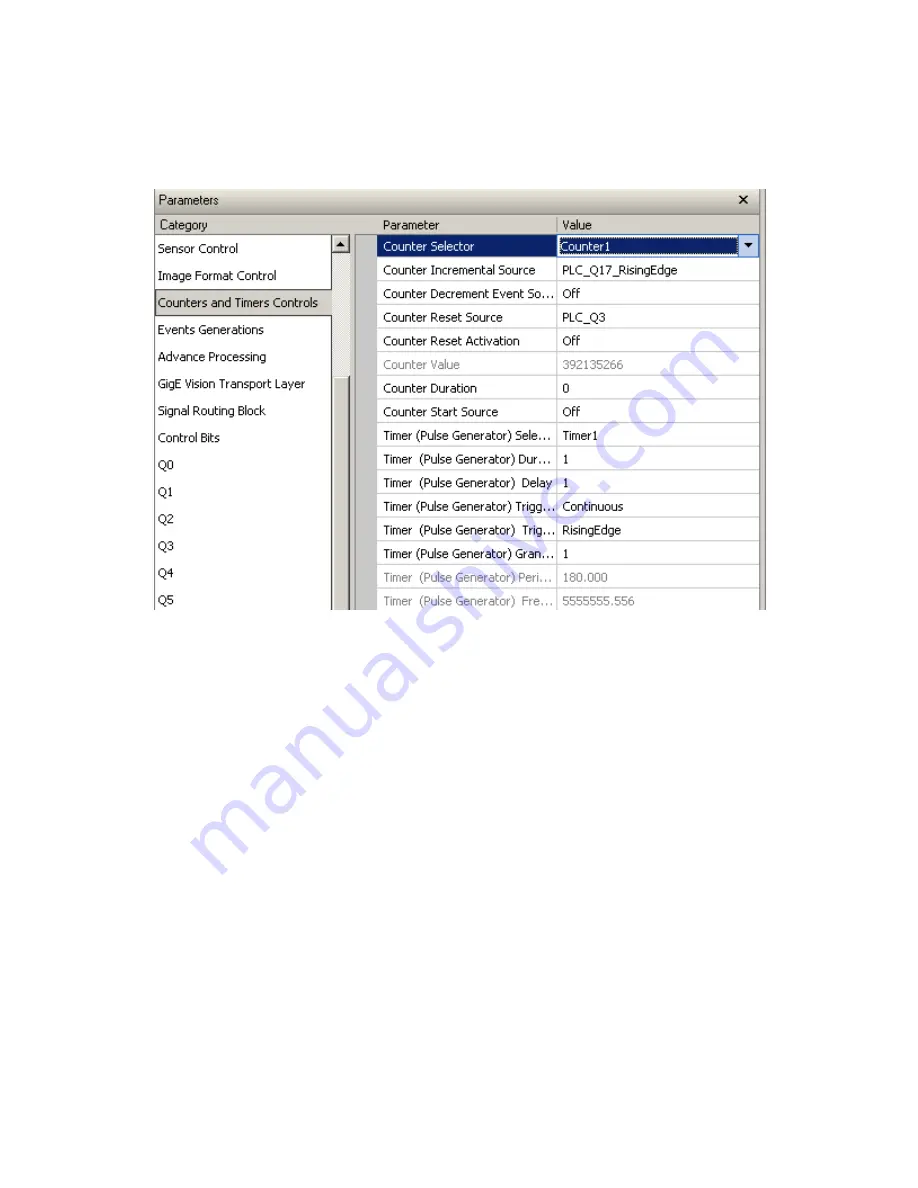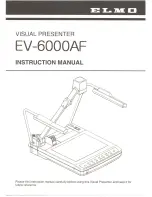
80
Spyder3 GigE Vision SG-14 Monochrome Cameras User’s Manual
03-032-20123-01
Teledyne DALSA
Counter
The cou nter m aintains a cou nt valu e that can be increased , d ecreased , or cleared based on inp u t signals.
The cou nter ou tp u ts tw o signals (w hich are inp u ts to the GPIO LUT).
Counter Incremental Source
Specifies how the input for incrementing the count is hand led . The counter’s up event uses the Q17 label
in the LUT. It can be one of the follow ing settings:
Disabled
On the rising ed ge
On the falling ed ge
On both ed ges
On the high level
On the low level
Counter Decrement Event Source
Sam e as above bu t for the d ow n event, bu t u ses the Q16 label in the GPIO LUT.
Counter Reset Activation
Sam e as above bu t for the clear event. The clear event inp u t of the cou nter d oes not have a p red efined
label on the GPIO LUT.
Counter Reset Source
Ind icates w hich label from the GPIO LUT that w ill be associated w ith the clear event inp u t of the cou nter.
Make su re you select an inp u t label that is not being u sed for its d efau lt behavior. The p ossible valu es a re:
Q3, Q7, Q8, Q9, Q10, Q11, Q16, and Q17.
















































